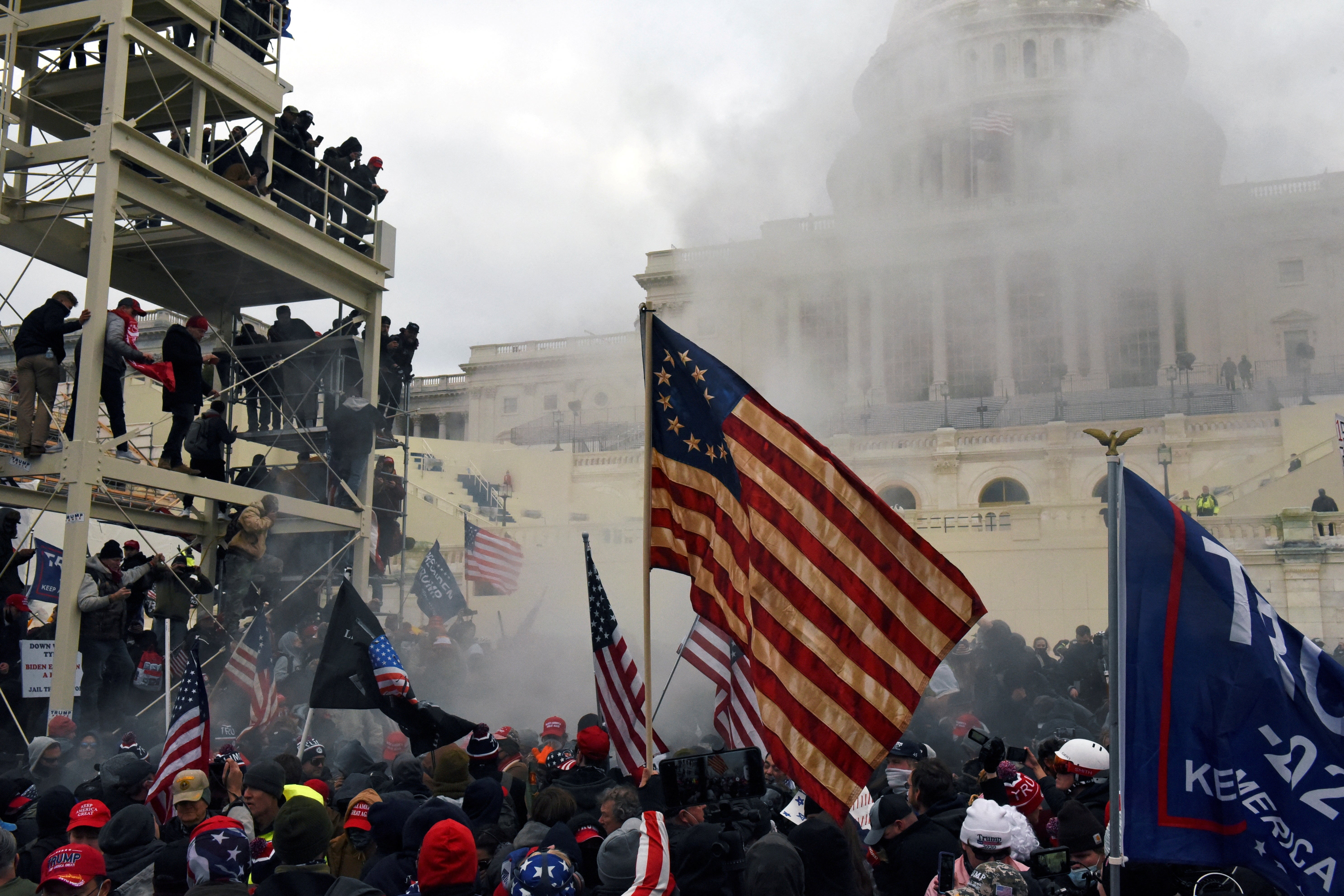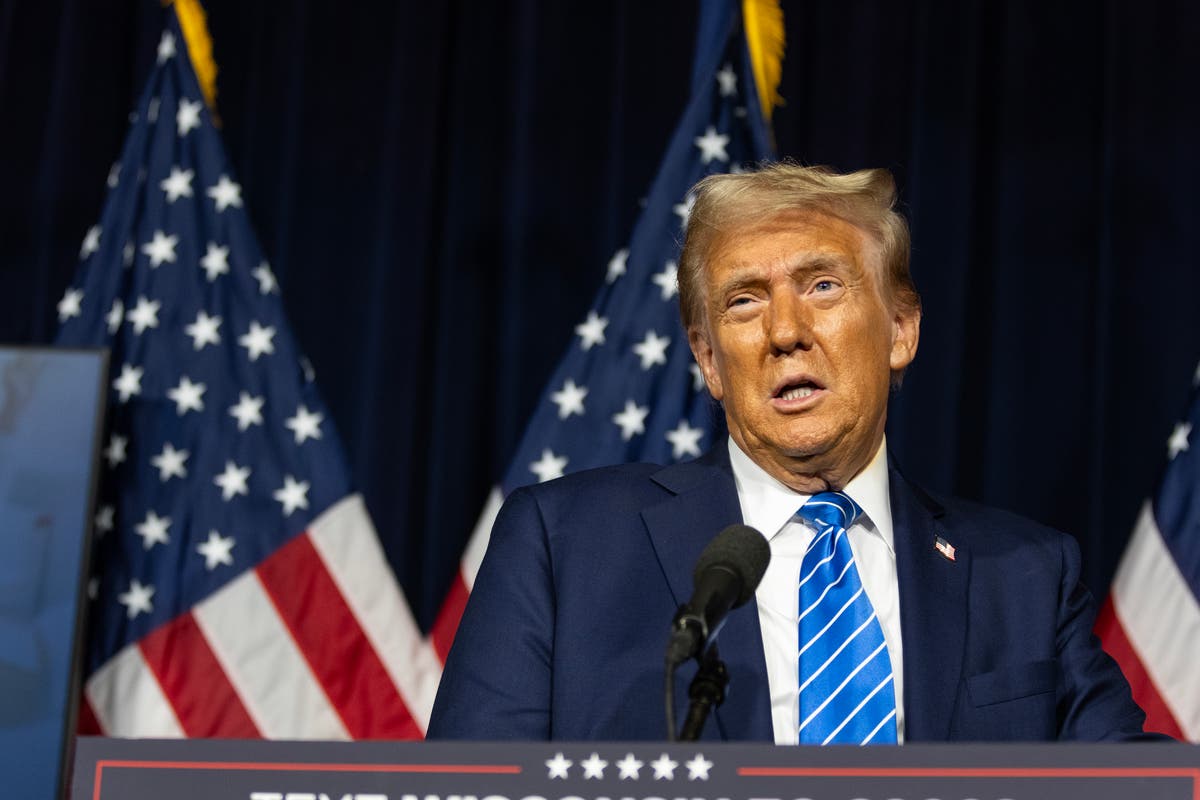Special counsel Jack Smith has outlined a sprawling criminal case against Donald Trump for his attempts to overturn his loss in the 2020 presidential election, detailing for the first time the former president’s “increasingly desperate efforts” to cling to power with “knowingly false claims of election fraud.”
Trump intentionally lied to voters, election officials, and his own vice president Mike Pence in what amounted to a criminal effort to stay in office, culminating in his failure to stop a mob that tried to do it with violence, according to the document filed in federal court in Washington DC on Wednesday.
“When the defendant lost the 2020 presidential election, he resorted to crimes to try to stay in office,” the filing says. “With private co-conspirators, the defendant launched a series of increasingly desperate plans to overturn the legitimate election results in seven states that he had lost.”
The stunning 165-page document — the fullest picture yet of Smith’s case — is full of new details about Trump’s alleged scheme, providing the court with a blueprint for evidence that prosecutors intend to show to a jury at trial.
Smith’s filing follows his renewed attempt to prosecute Trump in the wake of the Supreme Court’s decision that granted him some immunity from criminal prosecution for his spurious efforts to reverse his loss.
That new superseding indictment retains the same four core criminal charges against him, as Smith navigates a Supreme Court ruling that a president is “absolutely” immune from criminal prosecution for actions that stem from official duties in office, and retains “presumptive” immunity for actions in the “outer perimeter” of those duties.
Smith notes in the latest document that those co-conspirators acted in their “private” roles, not as public servants. Trump was acting as a candidate for office, not an office holder, when he committed the crimes at the center of the case, according to Smith.
In that capacity, Trump — “working with a team of private co-conspirators” — had “acted as a candidate when he pursued multiple criminal means to disrupt, through fraud and deceit, the government function by which votes are collected and counted,” according to prosecutors.
The former president “must stand trial for his private crimes as would any other citizen,” Smith adds.

“Although the defendant was the incumbent President during the charged conspiracies, his scheme was fundamentally a private one,” according to Smith.
Trump’s ‘knowingly’ false election fraud claims
The lengthy filing traces the history of Trump’s false claims of election fraud, characterized as an attempt to cast doubt on the legitimacy of the election, despite knowing that those claims were false.
The filing then documents the state-by-state efforts from Trump and his unindicted co-conspirators and allies to pressure state officials, election workers and others to validate his scheme to reverse his loss, then organize allies to submit fraudulent election certificates falsely stating that he won.
“The throughline of these efforts was deceit: the defendant’s and co-conspirators’ knowingly false claims of election fraud,” according to Smith’s team.
Prosecutors also intend to introduce trial testimony from a witness who claims that Trump told his family that he would “fight to remain in power regardless of whether he won the election,” according to the filing.
Prosecutors also plan to introduce evidence of Trump’s “deliberate disregard for the truth” and show that Trump and his allies made up their alleged evidence of fraud “from whole cloth.”
The filing lists multiple instances in which Trump’s own advisers disproved his claims, to which Trump allegedly replied: “It doesn’t matter if you won or lost the election. You still have to fight like hell.”
Pence repeatedly told Trump that there was no evidence of fraud to alter the election’s outcome, which Trump ignored, according to prosecutors.
A state-by-state plot to overturn results
As they pressed state officials to reverse his losses, Trump and his allies “sought to create chaos” at polling places, according to prosecutors, including at one incident in which a Trump campaign employee tried to “sow confusion” and start a “riot” at a vote-counting center in Detroit.
Trump at one point also tried himself to pressure now-former Republican Party Chair Ronna McDaniel to boost a false claim that voting machines in Michigan were rigged against him, according to prosecutors.
The state’s Republican House speaker told her that his statement was “f****** nuts,” the filing says.
Meanwhile, former Trump attorney Rudy Giuliani — who is presumed to be unindicted co-conspirator 1, whose actions are documented dozens of times in the filing — is accused of launching state-by-state efforts to convince Republican lawmakers to support Trump’s scheme. At one point, he texted the conspiracy to a Republican official in Michigan — the message wasn’t received because he entered the wrong number, according to prosecutors.
January 6 and Mike Pence
Prosecutors accuse Trump of intentionally fueling a mob that broke into the Capitol and assaulted police as his supporters tried to do what he failed to do in the states and in court, a desperate last act and his only remaining option to cling to power as members of Congress convened to certify election results on January 6, 2021.
“The defendant also knew that he had only one last hope to prevent Biden’s certification as President: the large and angry crowd standing in front of him,” Smith wrote. “So for more than an hour, the defendant delivered a speech designed to inflame his supporters and motivate them to march to the Capitol.”
Trump spoke with his former adviser Steve Bannon the day before, less than two hours before Bannon predicted that “all hell is going to break loose” on January 6. When Trump’s allies learned that Pence’s lawyer refused to back their plan to subvert the results during the joint session, Bannon reportedly replied: “F*** his lawyer.”
Smith reveals that Trump was alone in the Oval Office dining room when he tweeted about Pence as the mob stormed the Capitol.
While some rioters chanted “hang Mike Pence” as they breached the halls of Congress, Trump allegedly was by himself when he wrote that his vice president lacked “the courage to do what should have been done.”
Phone activity logs show that Trump was “using his phone, and in particular, using the Twitter application, consistently throughout the day” after his speech to supporters on January 6, according to the filing.

Trump is charged with four crimes, including conspiracy to defraud the United States, conspiracy to obstruct an official proceeding, obstruction and attempt to obstruct an official proceeding and conspiracy against rights. He has pleaded not guilty.
In court filings, his lawyers opposed the release of Wednesday’s filing, which they called “tantamount to a premature and improper” report from the special counsel, and argued that its public release amounts to election interference.
District Judge Tanya Chutkan — who has been eager to move the case forward after it was effectively frozen for months as the “immunity” appeal reached the Supreme Court — ordered that the document be publicly released against Trump’s objections. She has repeatedly refuted claims that the case against the Republican nominee for president is interfering in the 2024 election.
On his Truth Social, Trump blasted the filing as “falsehood-ridden” and “unconstitutional” and suggested that it was in response to Democratic vice presidential nominee Tim Walz’s “disastrous” debate performance on Tuesday night.

